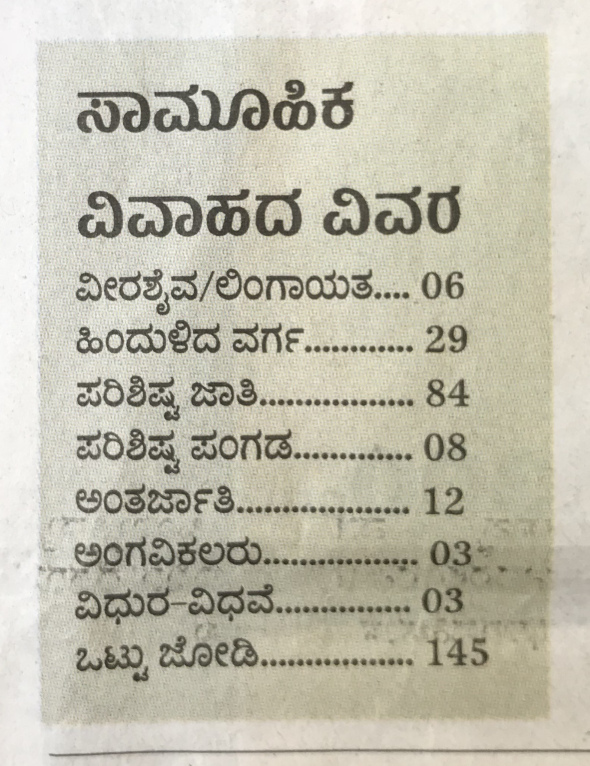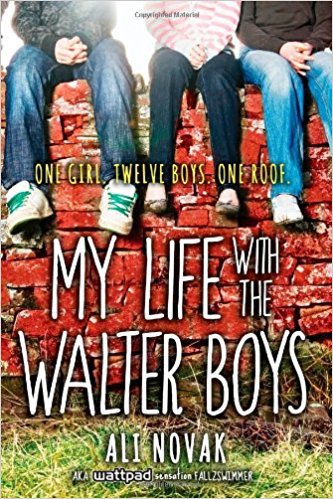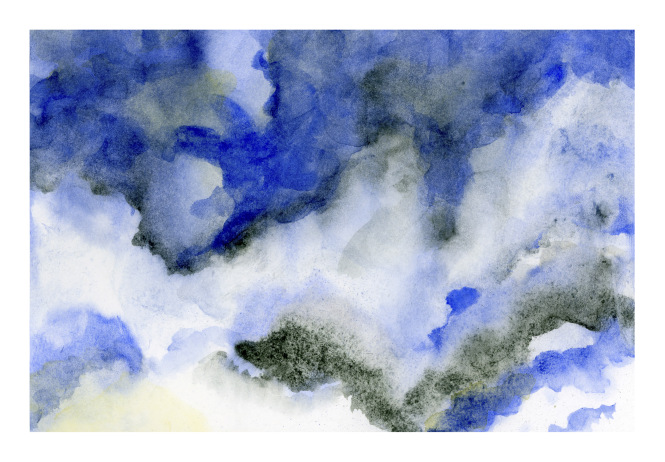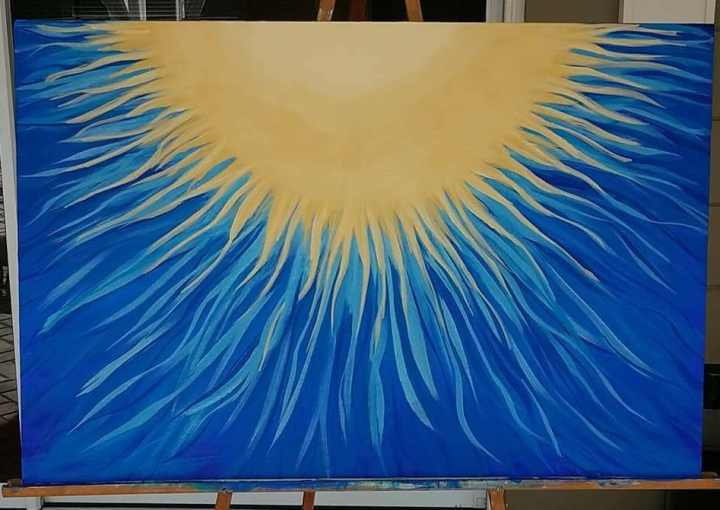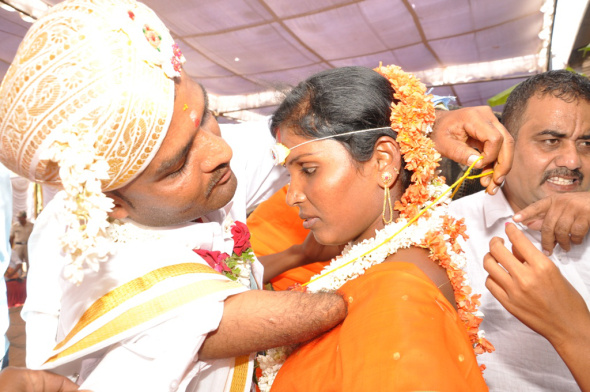
A groom uses his left hand to respond to the call ‘Mangalyam tanthu nanena‘ at a mass marriage at a village fair in Suttur in southern Karnataka, in January 2017
If there is one event that holds a mirror to the gargantuan socio-economic challenges confronting Bharat that is India, it must be a “mass marriage” where dozens of couples tie the knot at the same time and collectively say “I do”.
At one level, it is a repudiation of ostentation that is the hallmark of weddings in the post-liberalised age. As opposed to city slickers who splurge millions, and waste tonnes, a mass marriage is a signature in frugality, mostly out of compulsion.
At another level, it is a shared experience of what is otherwise a very personal affair. Every couple shares the same space, the same attire, the same rituals, the same priests. Families, friends and invitees all sit in one gigantic, grand melee.
As a phenomenon, of course, mass marriages go all the way back to Alexander, when in 324 BCE, he wed Darius‘s daughter Barsine in a ceremony in which 80 other couples too entered holy matrimony, but not for a long while!
But in making it happen in India, temples and religious mutts have played a pivotal role.
At Suttur, a little village 28 km south of Mysore, mass marriage is an important component of the annual jathre (fair). And, on Sunday, 145 couples walked hand in hand through the town, and into the future.
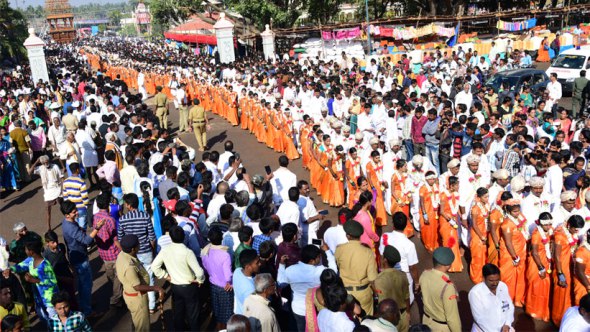
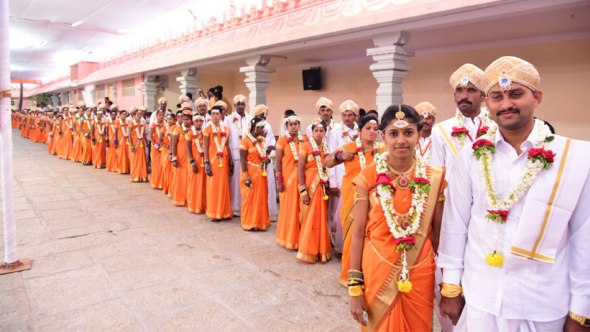

There is something very moving about the pictures, if you can be moved, if you can take your eyes away from the saffron. But, in the end, it is the composition of the 145 couples who locked their fingers, that should leave you thinking, wondering, hoping, praying.
Veerashaivas/Lingayats: 06 couples
Backward classes: 29 couples
Scheduled Castes: 84 couples
Scheduled Tribes: 08 couples
Inter-caste: 12
Handicapped: 03
Widows-widowers: 03
Total: 145 couples
Photographs: courtesy JSS
Screenshot: courtesy Praja Vani
Rate this:Share your Churumuri